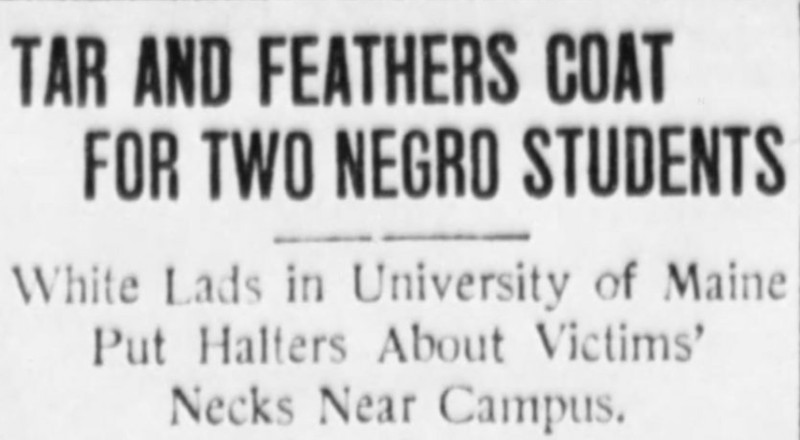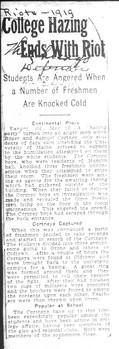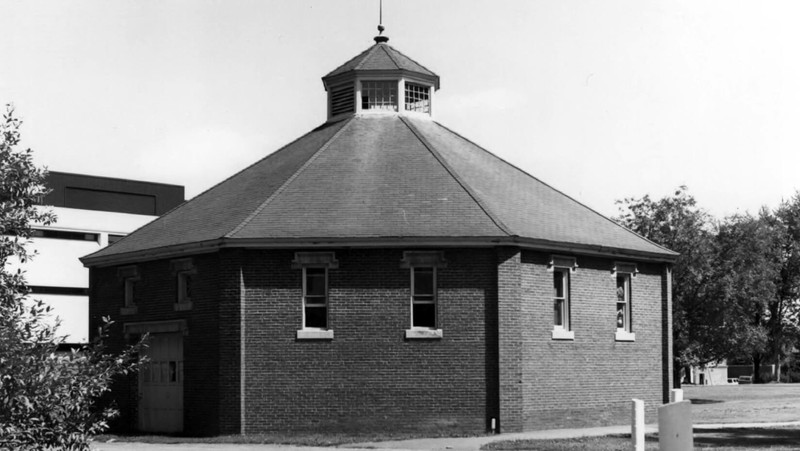Red Summer Racial Violence Comes to Campus
Introduction
Text-to-speech Audio
The beautiful Cyrus Pavilion holds a dark secret. One cold night in April of 1919, two Black brothers from Boston, Samuel Edward and Roger Davis Courtney, were tarred and feathered here by their white peers. The brothers, who had escaped another attack earlier in the night, were hunted by a mob and lead four miles back to campus by horse halters. The event was part of a larger series of attacks nationwide against African Americans that year known as the Red Summer. The event was lost in the archives until recently, and omitted from local press at the time. Read more in the Backstory.
Images
Sameul, left, and Roger Davis Courtney pictured tarred and feathered

NY Evening World article about the incident from May 1, 1919

Chicago Defender article from May 22, 1919

Cyrus Pavilion Theater, formerly the livestock viewing pavilion where the Courtney brothers were tarred and feathered

Backstory and Context
Text-to-speech Audio
One cold April night in 1919, at around 2 a.m., 60 rowdy white students surrounded the dorm room of Samuel and Roger Courtney in Hannibal Hamlin Hall, with plans to attack the two Black brothers from Boston. The Courtney brothers escaped, infuriating the growing mob. They were captured in nearby Old Town and led the four miles back to campus with horse halters around their necks. Taken to the livestock-viewing arena, now known as Cyrus Pavilion, the mob held down Samuel and Roger as their heads were shaved and their bodies stripped naked in the near-freezing weather. They were forced to slop each other with hot molasses, and were then covered with feathers, likely from dorm room pillows. Pleas from victims and bystanders to stop were ignored. Local police arrived only after incident ended. No arrests were made. No local papers reported on the incident.
Intelligent, well-to-do, athletic, and handsome, the students had everything going for them. The Courtney brothers were sons of the prominent Black Boston physician Dr. Samuel Courtney, who was a close friend and student of Booker T. Washington, and one of the original leaders of the National Negro Business League. Following the attack, both brothers were asked to leave campus, and neither finished their studies. Both men died young within the next decade.
Historic records collected by the Tuskegee Institute, articles in the Black press like the Chicago Defender, and a former UMaine student’s scrapbook help piece together the details of the incident. The event was one of more than four dozen known attacks against Black Americans that year in what is now called the Red Summer of 1919. The McGillicuddy Humanities Center's Karen Sieber recently discovered the incident after spending years building a database and archive on the Red Summer. The event had never before been included in Red Summer data or academic research, lost to time. The incident is now included in her data on Visualizing the Red Summer, linked below.
While the university's administration in 1919 tried to sweep the incident under the rug, our current President, Joan Ferrini Mundy, responded immediately upon learning of the events, condemning the attack and apologizing to family members. Read her statement linked below.
Sources
"College Hazing Ends With Riot," Chicago Defender, May 22, 1919.
"Tar and Feathers Coat for Two Negro Students," Evening World (NY), May 1, 1919.
Sieber, Karen. "The Hidden Story of When Two Black College Students Were Tarred and Feathered." The Conversation, February 8, 2021.
Sieber, Karen. www.visualizingtheredsummer.com
Unknown, Author, "Photograph of Courtney Brothers Tarred and Feathered" (1919). University of Maine Racial Justice Collection. 3.
www.visualizingtheredsummer.com
www.visualizingtheredsummer.com
University of Maine Photo Archives
